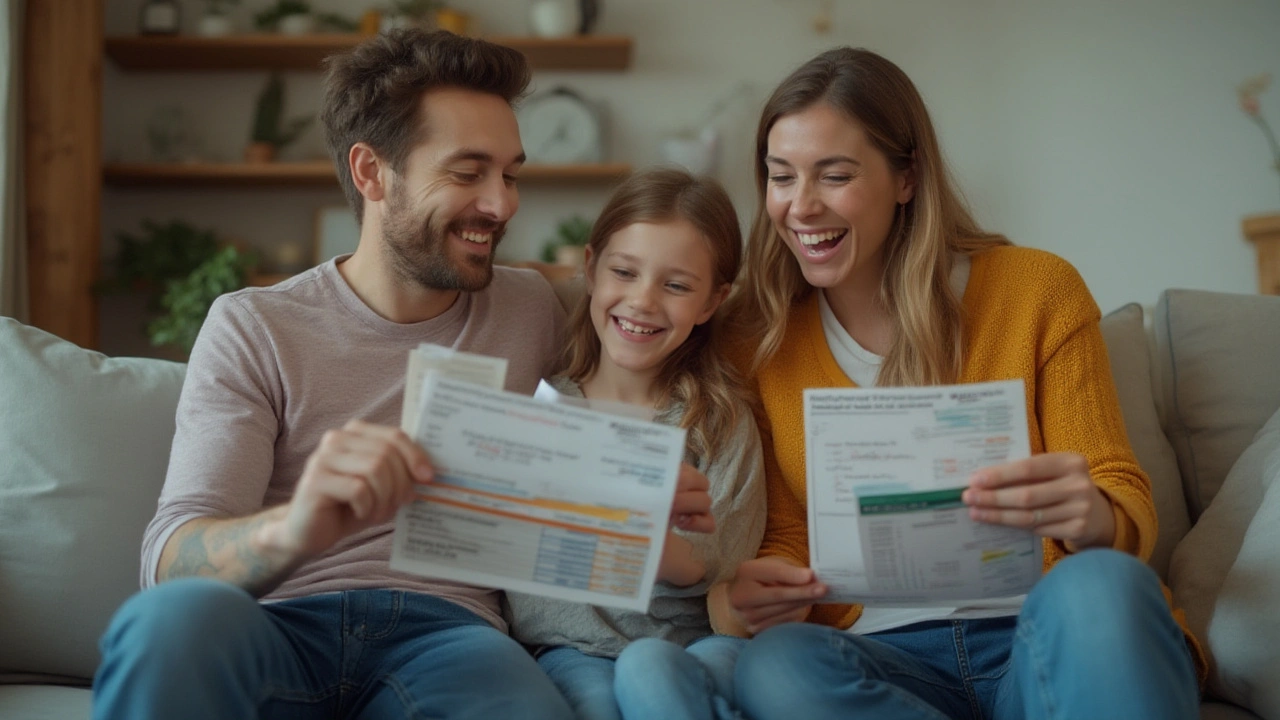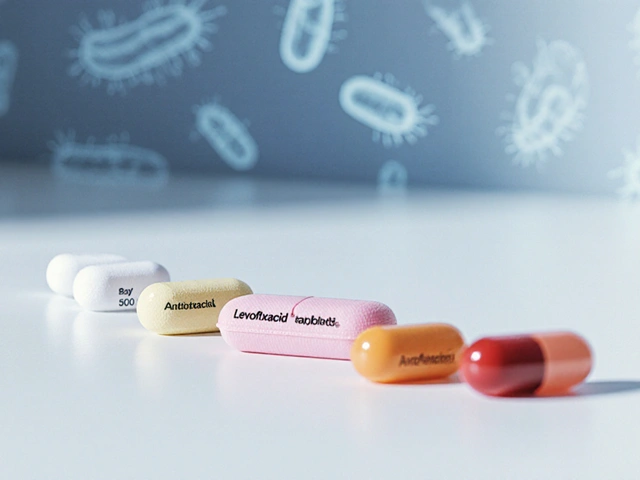
Picture this: You’re staring down the pharmacy counter, prescription in hand, thinking, “How much will my inhaler set me back this time?” Advair has long been the go-to for asthma and COPD, but its price tag? Yikes. For years, many folks have felt stuck with high costs or less effective options. Fast forward to 2025, and the landscape doesn’t look the same anymore. Generic versions of Advair have finally started chopping down those sky-high prices, giving more people a fighting chance to breathe easier—without emptying their wallets.
The Rise of Advair Generics and Why They Matter
It wasn’t always easy for Advair users. For more than a decade after its debut, this dual-action inhaler—combining fluticasone (a steroid) and salmeterol (a long-acting bronchodilator)—dominated the scene but stayed pricey because of its patent. But once that patent loosened its grip and the first generics hit the shelves, things changed dramatically. Prices for a typical 30-day supply dropped anywhere from 25% to 60% in some markets. That’s not just pocket change—it’s the difference between affording groceries or missing rent for some families. According to industry data published earlier this year, about 64% of asthma patients switched to a generic version in 2024 compared to 27% in 2022.
So why the sudden rush? Generic drugs have to prove to the FDA they’re just as safe and effective as their brand-name twins. There’s no getting away with cheap imitations. For example, the main Advair generics—Wixela Inhub, AirDuo RespiClick, and some others—contain the exact same active ingredients and delivery methods. The science says they work just as well at controlling asthma symptoms or keeping COPD flare-ups at bay. But by skipping the big marketing budgets and expensive packaging, generics slide right into pharmacies for a fraction of the price.
Still, some people feel nervous stepping away from a name they trust. Here’s the thing: switching to a generic isn’t just about saving money—it’s about getting the same level of care at a lower cost, freeing up resources for other essentials. Anecdotal stories pop up everywhere. Take Jenny in Oklahoma: she spent $430 a month on brand Advair until her doctor switched her to Wixela. Overnight, her out-of-pocket cost dropped below $90, but her breathing stayed just as steady. Multiply her story by millions, and you see how opening the door to generics ripples through families everywhere.
When it comes to health insurance, the push for generics is even stronger. Many plans, including Medicaid and employer-based programs, nudge users toward generics, listing them as “preferred” on their formularies to encourage uptake. Some plans even cut co-pays dramatically if you opt for a generic, saving you anywhere from $20 to $150 per month per prescription. And while Medicare Part D coverage varies by region and plan, most include at least one generic Advair option, slashing annual costs by hundreds or even thousands of dollars.
Another big plus: accessibility. Smaller pharmacies and big chains alike are more likely to keep generic versions in stock because of their broad demand and lower costs. If you’ve ever called around town trying to hunt down a name-brand inhaler, you know the frustration. Generics make it easier to get what you need, when you need it—no more frantic runs between Walgreens and CVS hoping one of them isn’t sold out.
So, what does this all mean in 2025? Advair’s generics have leveled the playing field, making it far more realistic for people to get proven, effective treatment for chronic lung conditions without the knock-you-down price tags. If you’re looking at your prescription bill and shaking your head, you’re definitely not alone—and there’s a better path now.

Comparing Brand vs. Generic: Facts, Figures, and Real-World Savings
You might wonder how much you really save swapping from brand Advair to its generic doubles. Here’s where it gets eye-opening. Check out the price comparison table for the most common Advair options and their generic equivalents:
| Medication | Typical Month Supply Cost (2022) | Month Supply Cost (2025) | Coverage (Insurance/Formulary) |
|---|---|---|---|
| Advair Diskus (Brand) | $420 - $555 | $410 - $525 | Most plans, higher co-pays |
| Wixela Inhub (Generic) | Not available | $120 - $220 | Widely covered, low co-pay |
| AirDuo RespiClick (Generic) | Not available | $90 - $180 | Widely covered, low co-pay |
| Generic Fluticasone/Salmeterol | Not available | $60 - $160 | Increasingly covered, lowest tier |
That kind of savings isn’t just a short-term deal. The average American with asthma spends over $1,800 a year out-of-pocket on their control medications alone, according to a 2024 Asthma Foundation report. The switch to generics has already reduced the average annual inhaler expenditure to around $970 for those who made the change. That’s money back in your budget, possibly even enough for a summer trip or a couple months’ rent, rather than sunk into a single line item in your medical expenses.
Another solid tip: Always ask the pharmacist about available discounts or manufacturer coupons. Some generic makers offer one-time or ongoing savings, especially if you sign up for refill reminders or use their mail-order pharmacy options. Also, if your insurance coverage is patchy, or if you’re on a high-deductible plan, local independent pharmacies and online generic pharmacies often get creative with pricing, sometimes undercutting even big chain stores by 10–30%. It pays to do some quick price comparison calls, or better yet, use websites and apps designed to track down the best deals in your area.
Another detail: while most generics are inhaled the same way as Advair Diskus, some, like AirDuo RespiClick, use a breath-activated device instead of the familiar twist-and-inhale disk. If you’re nervous about the switch, pharmacists can demo these devices with you, and some even let you try practice inhalation on dummy devices in the store. If you have dexterity problems or arthritis, mention this to your doctor. Some devices might suit you better than others.
What about safety and effectiveness? The FDA has strict rules—generics can’t get approval unless they deliver the same dose, at the same speed, to your lungs. Multiple independent studies published in the Journal of Pulmonary Medicine over the past two years confirm that asthma control, lung function, and flare-up rates are nearly identical between brand and generic. And real-world evidence keeps stacking up—with some generic users even reporting fewer inhaler errors because of simpler device design, especially among children and seniors.
And here’s something many people overlook: switching to generics can also get you more support from pharmaceutical assistance programs. Many of these programs, especially those run by advocacy groups or foundations, have expanded their support lists to include major generics, knowing how critical affordability is for ongoing treatment adherence.

Other Budget-Friendly Options: Exploring the Broader Market
Maybe you’ve tried Advair or its generics and still need something different. Luckily, 2025 is shaping up to be the golden age for affordable inhaler alternatives. The FDA approved several new generic and low-cost brand options in the past eighteen months, and competition is heating up. That’s a win for patients looking for the Advair generics keyword—cheaper, easier-to-find, and often tailored for different age groups or severity of symptoms.
For those who want to see a full roundup of every comparable inhaler on the market, both new generics and low-cost brands, check out this handy list of Advair alternatives generic that lays out the latest choices, device details, and pricing tips. Pharmacies report brisk sales of alternatives like generic Symbicort, Trelegy Ellipta, and Breo in both their brand and generic forms. Many deliver similar results with slightly different or additional medications, like adding a third ingredient for stubborn COPD cases.
So how do you know which alternative is right for you? Here are some quick tips:
- Talk to your doctor. They have access to your medical history and up-to-the-minute formulary lists. Don’t just accept what the pharmacy gives you—push for a conversation about which device is easiest for you to use and which fits your budget.
- Don’t be afraid to switch. Many plans allow you to try one or two alternatives with a doctor’s note. If one generic irritates your throat or cough triggers, you may do better on a similar brand with a different delivery method or mix of active ingredients.
- Leverage tech tools. Apps now let you scan your prescription and instantly compare cash prices, coupon deals, and even pharmacy inventory in your area, cutting hours off your search for the best price.
- Review annual changes. Insurance plans and formularies shift every year. What wasn’t covered last January might be standard coverage now. Always take another look at your plan’s paperwork during open enrollment.
And don’t forget mail-order pharmacies. Besides possible cost savings, home delivery is a game-changer for anyone who struggles getting to the pharmacy in bad weather, or who lives in rural areas with spotty local pharmacy stock.
All this competition is shifting how people see their care. Instead of being chained to one expensive brand, folks can actually shop around—people at all income levels, all types of insurance, or even no insurance at all. For so many, that means fewer missed doses, fewer flare-ups, and an easier time sticking to treatment plans. Sometimes, peace of mind is the ultimate savings.





Comments (17)
Ryan C
Let’s be real-generic Advair isn’t just cheaper, it’s bioequivalent. FDA requires ≤5% variance in AUC and Cmax, and studies show no clinically significant difference in FEV1 improvement. Wixela Inhub? Same device, same dose, same efficacy. The only difference? Your wallet doesn’t cry.
Dan Rua
My mom switched to AirDuo last year-her inhaler costs $80 now instead of $450. She’s breathing better, too. Honestly, I didn’t believe it until I saw it. 🙌
Mqondisi Gumede
Generic is just corporate greed in a cheaper box they want you to swallow like a good little American. Brand name means quality. Always. You think the FDA cares about your rent? No. They care about Big Pharma’s bottom line. The system is rigged
Douglas Fisher
I just want to say… thank you… for writing this… with such clarity… and compassion… I’ve been on Advair for 12 years… and the switch to generic… changed my life… I can finally afford my insulin too…
Albert Guasch
It is imperative to underscore the clinical equivalence of generic fluticasone/salmeterol formulations. The FDA’s ANDA pathway mandates rigorous pharmacokinetic and pharmacodynamic validation. Consequently, therapeutic substitution is not merely cost-effective-it is evidence-based standard of care.
Ginger Henderson
Okay but have you tried actually using Wixela? The mouthpiece is weird. Like, why did they make it so stiff? I just want to inhale, not do a bicep curl.
Bethany Buckley
It’s fascinating how neoliberal pharmaceutical policy has commodified pulmonary resilience. The commodification of bioequivalence via ANDA pathways reflects a broader epistemic shift-from therapeutic trust to algorithmic cost-benefit rationing. 🤔
Stephanie Deschenes
If you're switching, make sure your pharmacist shows you how to use the device. AirDuo RespiClick is breath-activated-no need to press and breathe like with Diskus. I’ve helped three elderly patients make the switch. It’s a game-changer.
Cynthia Boen
Yeah right. Generic is just a placebo with a cheaper label. My cousin’s asthma got worse after switching. Coincidence? I think not.
Amanda Meyer
I get why people are skeptical. But if you look at the actual clinical trials-JAMA, Lancet Respiratory, all of them-there’s no measurable difference in exacerbation rates. Maybe we need better patient education, not fear.
Jesús Vásquez pino
Wait, so you’re telling me I can get the same meds for $90? Why didn’t anyone tell me this before? I’ve been paying $400 for years because my doctor just said ‘take Advair’ and never mentioned alternatives. This is insane.
hannah mitchell
My neighbor’s kid uses AirDuo now. He used to cough all night. Now he plays soccer. No drama. Just breathing.
vikas kumar
In India, we get generic inhalers for under $5. It’s not a luxury-it’s a right. I’m glad the U.S. is catching up. Everyone deserves to breathe without bankruptcy.
Vanessa Carpenter
My pharmacy gave me a coupon for $30 off Wixela. I didn’t even ask. Just handed me the bag. That’s the kind of care you don’t get from big chains.
Bea Rose
Fake savings. They just changed the packaging. Same pill, same price. You’re being played.
Michael Collier
It is a matter of public health policy that pharmaceutical affordability must be prioritized. The transition to generic bronchodilator-steroid combinations represents a significant advancement in equitable access to chronic disease management. We should applaud regulatory diligence and market competition.
Shannon Amos
So… you’re telling me the reason I paid $500 a month for 10 years… was because no one told me to ask for a generic? 😅